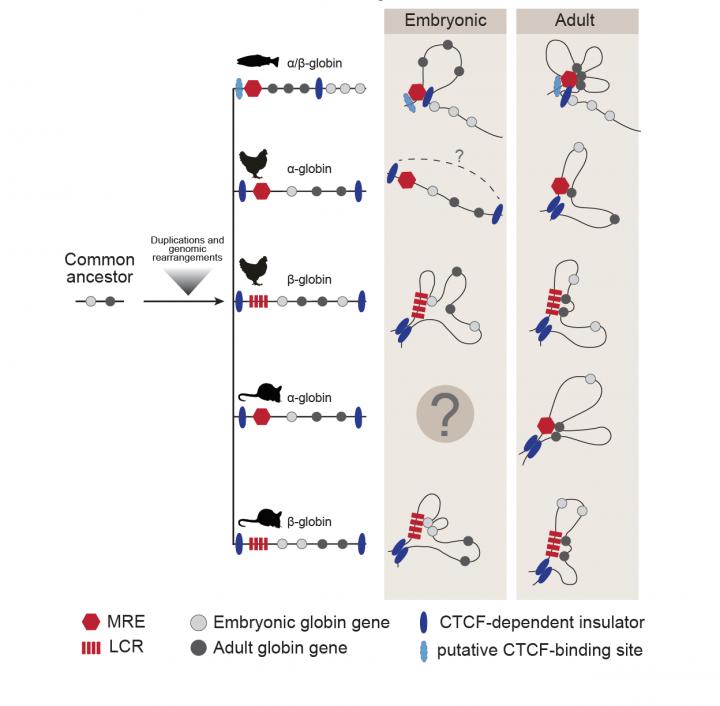
Credit: Razin lab
It seems like a feat of magic. Human DNA, if stretched out into one, long spaghetti-like strand, would measure 2 meters (six feet) long. And yet, all of our DNA is compacted more than 10,000 times to fit inside a single cell. How is this accomplished while preserving the overall, vital genomic organization?
With new techniques, scientists are beginning to understand the principles of 3D genome folding. And in one of the studies of its kind, Anastasia Kovina, Sergey Razin a et al. have examined the well-studied globin gene cluster to understand the evolution of genome folding behind a vital process, delivering oxygen throughout the body.
Their study sheds light on the genomic evolutionary process that resulted in segregation of the alpha and beta-globin genes into two differently regulated domains in warm-blooded vertebrates. "We suggest that globin gene domains of some modern, cold-blooded animals retain certain features of an ancient, ancestral domain," said corresponding author Sergey Razin.
By investigating globin genes in the zebrafish model organism, their evidence points toward their suggestion that modern clusters of α- and β-globin genes of warm-blooded animals evolved from an ancestral locus, contained within a globular genomic cluster that was located close to other evolutionary conserved genes.
They found that evidence of a dynamic genomic organization of globin gene cluster that differs depending on the developmental age of the zebrafish. Using different assays, they have shown that the adult globin sub-compartment of the zebrafish gene locus is insulated from the embryonic larval component.
"We have found that the major globin gene locus of zebrafish (Danio rerio) is structurally and functionally segregated into two spatially distinct subloci harboring either adult or embryo-larval globin genes," said Razin. "These subloci demonstrate different organization at the level of chromatin domains and different modes of spatial organization, which appears to be due to selective interaction of the upstream gene enhancer with the sublocus harboring globin genes of the adult type."
This organization drastically differs from that of the mammalian α- and β-globin gene domains, where both embryo-fetal and adult globin genes are recruited to the same regulatory elements in a developmental and stage-specific process.
The finding of a functional separation of adult and embryo globin genes reflected in the 3D genomic organization chromatin will provide an important contribution to the field and interesting evolutionary perspective to how gene clusters are organized and expressed.
###
Media Contact
Joseph Caspermeyer
[email protected]
480-258-8972
@OfficialSMBE
http://mbe.oxfordjournals.org/
############
Story Source: Materials provided by Scienmag





